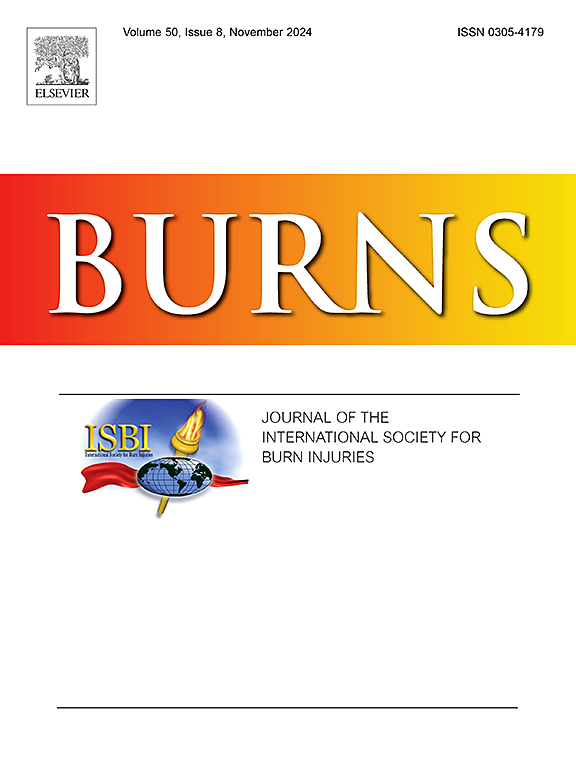REsource Support To Optimize REcovery (RESTORE) document study: Evaluating aftercare resources for burn survivors
IF 3.2
3区 医学
Q2 CRITICAL CARE MEDICINE
引用次数: 0
Abstract
Introduction
Burn survivors may face chronic adverse sequelae from burn injury and report a lack of resources during the aftercare phase of recovery after discharge. This study aimed to identify the resources provided by healthcare institutions to assist adult burn survivors in the post-discharge transition to living in their communities.
Methods
A convenience sample of burn injury healthcare providers in the United States and Canada described resources provided to adult burn survivors and implementation processes. The World Health Organization (WHO) International Classification of Functioning, Disability, and Health (ICF) Core Set for burn injury provided a conceptual framework to categorize resources. Implementation documentation included who, when, where, and how the resources were provided.
Results
In total, 14 (13 U.S., 1 Canadian) healthcare institutions provided information about 255 burn aftercare resources. Organizing resources through the ICF revealed that 49.0 % were related to Environmental Factors, 39.2 % to Activities and Participation, and 11.8 % to Body Functions. Important topics covered included health services, professionals, handling stress and emotional health, self-management of burn injury sequelae, and wound care. Some topics not covered included fatigue, sleep, respiratory functioning, and thermoregulation. Resource implementation was carried out largely by social workers, nurses, and therapists. Most resources were distributed as handouts, packets, or verbally, and were provided to inpatients, primarily as needed, on day of discharge, or at admission.
Conclusion
This study gives an overview of the burn aftercare resources currently provided in participating healthcare institutions. The ICF Core Set for burn injury provided useful strategies for examining resources to identify strengths and content gaps. Implementation trends can inform efforts to effectively provide resources.
求助全文
约1分钟内获得全文
求助全文
来源期刊

Burns
医学-皮肤病学
CiteScore
4.50
自引率
18.50%
发文量
304
审稿时长
72 days
期刊介绍:
Burns aims to foster the exchange of information among all engaged in preventing and treating the effects of burns. The journal focuses on clinical, scientific and social aspects of these injuries and covers the prevention of the injury, the epidemiology of such injuries and all aspects of treatment including development of new techniques and technologies and verification of existing ones. Regular features include clinical and scientific papers, state of the art reviews and descriptions of burn-care in practice.
Topics covered by Burns include: the effects of smoke on man and animals, their tissues and cells; the responses to and treatment of patients and animals with chemical injuries to the skin; the biological and clinical effects of cold injuries; surgical techniques which are, or may be relevant to the treatment of burned patients during the acute or reconstructive phase following injury; well controlled laboratory studies of the effectiveness of anti-microbial agents on infection and new materials on scarring and healing; inflammatory responses to injury, effectiveness of related agents and other compounds used to modify the physiological and cellular responses to the injury; experimental studies of burns and the outcome of burn wound healing; regenerative medicine concerning the skin.
 求助内容:
求助内容: 应助结果提醒方式:
应助结果提醒方式:


